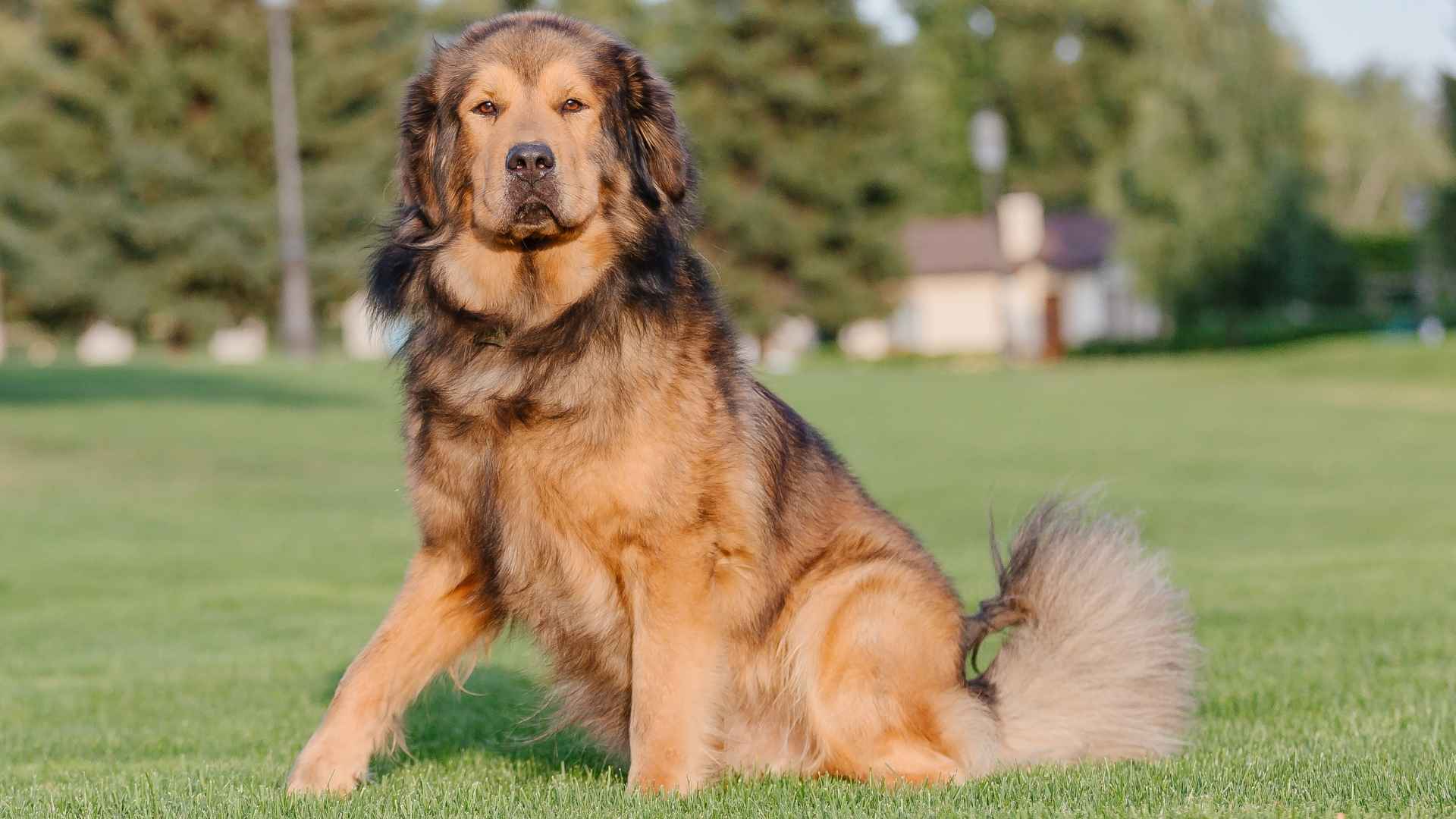Some dogs march to the beat of their own drum—especially the bigger ones. These independent giants don’t just crave affection; they value their space, their freedom, and the ability to think for themselves. They’re confident, calm, and sometimes a little mysterious, showing love on their own terms rather than seeking constant attention.
Having a large dog that’s independent means you get a companion who’s self-assured and capable of spending time alone without stress or separation anxiety. These dogs often have a quiet dignity, carrying themselves like royalty who expect respect but aren’t demanding of constant cuddles.
They’re perfect for owners who appreciate a canine partner who’s loyal yet low-maintenance emotionally, blending strength and self-reliance into one impressive package.
We’ll explore what independence means in big dogs, how it shapes their personality, and what kind of owner-dog relationship flourishes when respect and space are part of the deal. Ready to meet the majestic lone wolves of the dog world?
Independent Big Dog Breeds
1. Australian Cattle Dog

Vibe: The hardworking cowboy with a mind of its own
The Australian Cattle Dog isn’t just a pretty face with striking blue or speckled coats—they’re the original “work hard, play harder” breed.
Originally bred to herd cattle across vast, rugged terrains, these medium-sized dogs are tough, smart, and incredibly independent. Think of them as the Lone Ranger of the dog world: confident, self-reliant, and not always eager to take orders.
With a lean, muscular frame, the Australian Cattle Dog looks like it’s always ready for action. Its alert ears, intense eyes, and compact body scream purpose and stamina.

Weight: 35–50 pounds
Height: 17–20 inches at the shoulder
Aussie Independence Points:
✔️ Smart and self-sufficient (sometimes a bit stubborn)
✔️ Loyal and protective, but prefers having a job to do
✔️ Great for active owners who love a challenge
A whip-smart, headstrong herder who thrives on problem-solving. This dog doesn’t just follow commands—it evaluates them. Fiercely loyal but never clingy, it values its independence as much as it does its family.
But don’t mistake independence for aloofness—these dogs form strong bonds with their humans and are loyal protectors of their family and home. Just be ready to keep them busy—bored Australian Cattle Dogs have been known to create their own “fun,” which sometimes means redecorating your backyard.
2. Bullmastiff
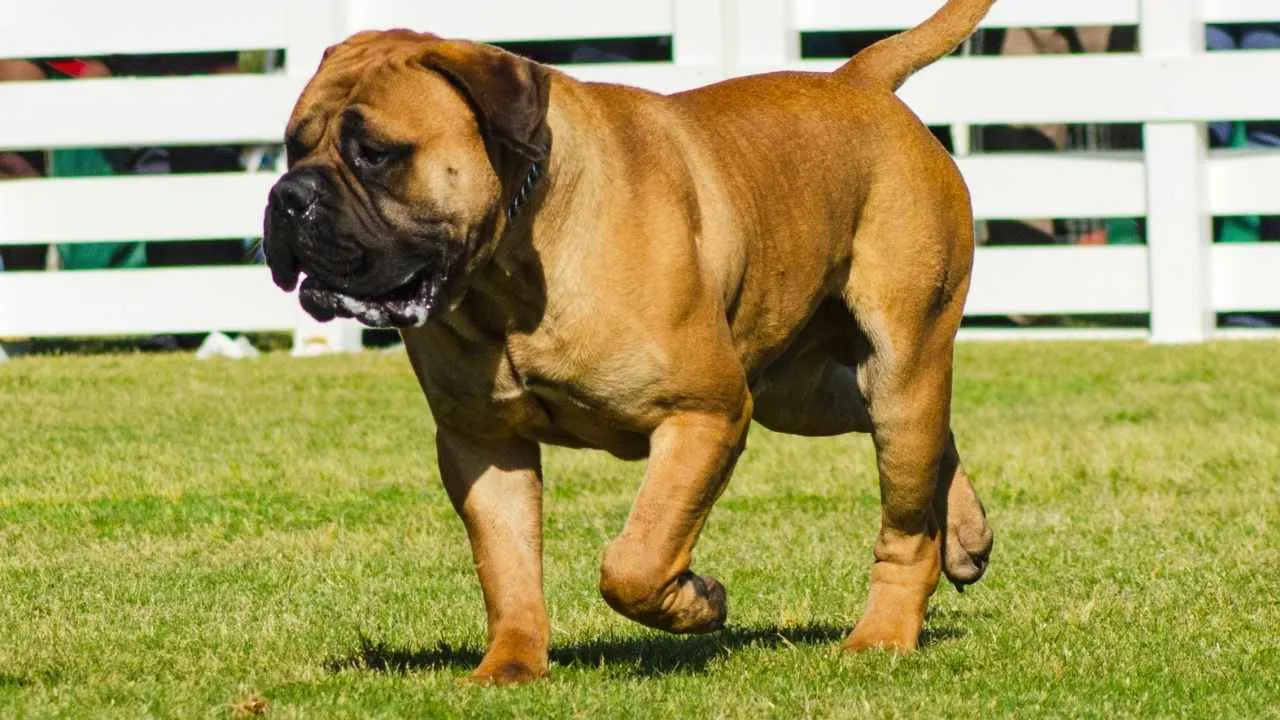
Vibe: The gentle giant with a “do not disturb” vibe
Bullmastiffs are the classic strong, silent type. Built like a tank but with the heart of a teddy bear, these dogs take their job as family guardians very seriously—but they’re also perfectly happy chilling at your feet, doing their best statue impression.
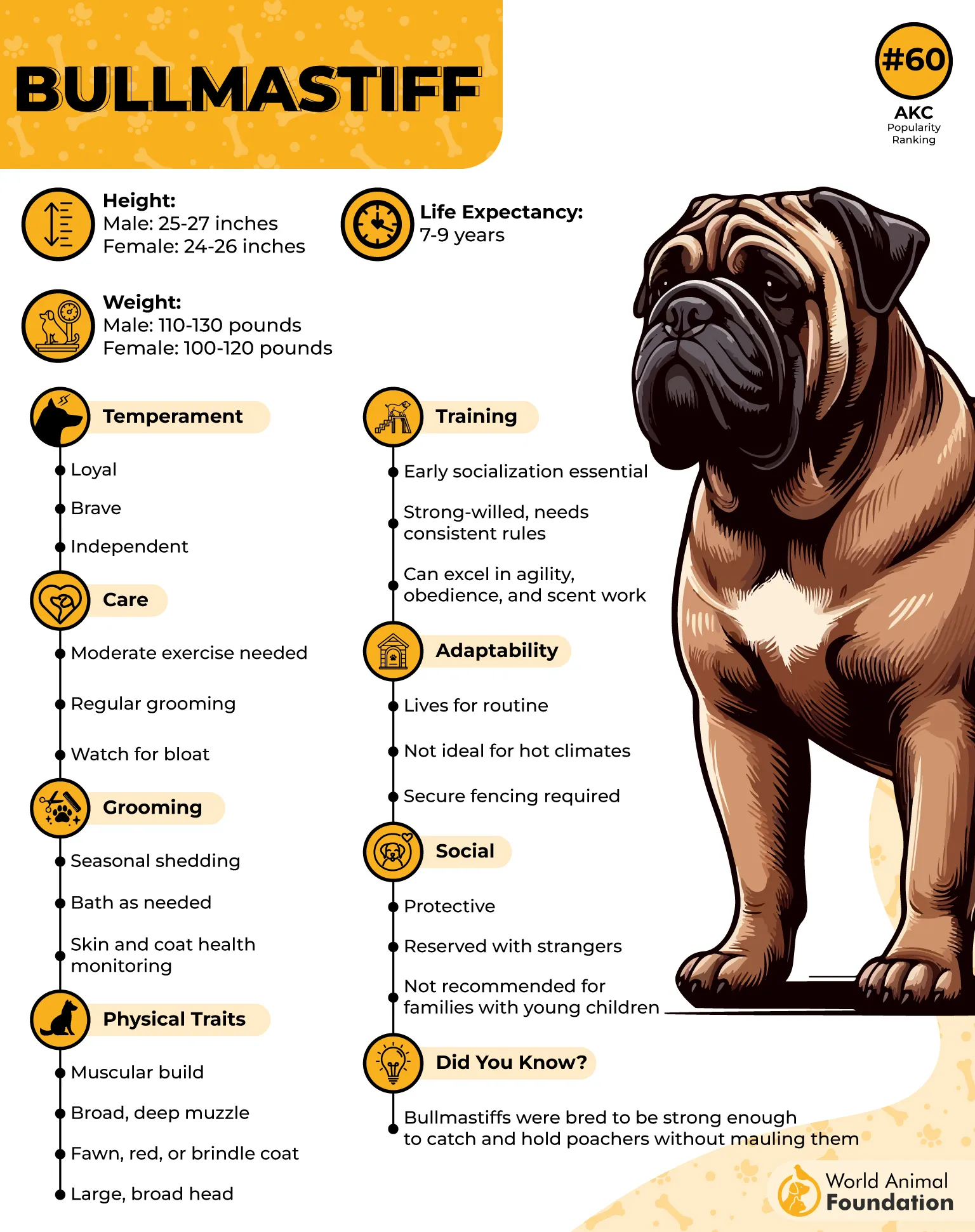
Weight: 100–130 pounds
Height: 24–27 inches at the shoulder
Their independent streak means they don’t bark at every little thing; instead, they’ll silently size up a situation and act only when necessary. If you want a dog that’s low-maintenance but always ready to stand guard, the Bullmastiff is your go-to.
Bullmastiff Independence Points:
✔️ Calm, confident, and quietly protective
✔️ Loves family but values personal space (just like you)
✔️ The perfect “gentle giant” with a low-key attitude
Despite their intimidating size and serious face, Bullmastiffs are surprisingly affectionate and patient with kids. Just don’t expect them to be your constant shadow—they enjoy their alone time as much as their family time.
As per WebMD, Bullmastiffs require plenty of mental engagement but shouldn’t be subjected to excessive physical activity. They may not be ideal for someone seeking a high-energy, fast-moving companion. However, they can make excellent walking partners.
Silent, stoic, and self-possessed, the Bullmastiff is the kind of dog that watches the world with calm eyes. It doesn’t need constant direction—it intuitively knows when to step in and when to step back. Protective but not overbearing.
3. Afghan Hound
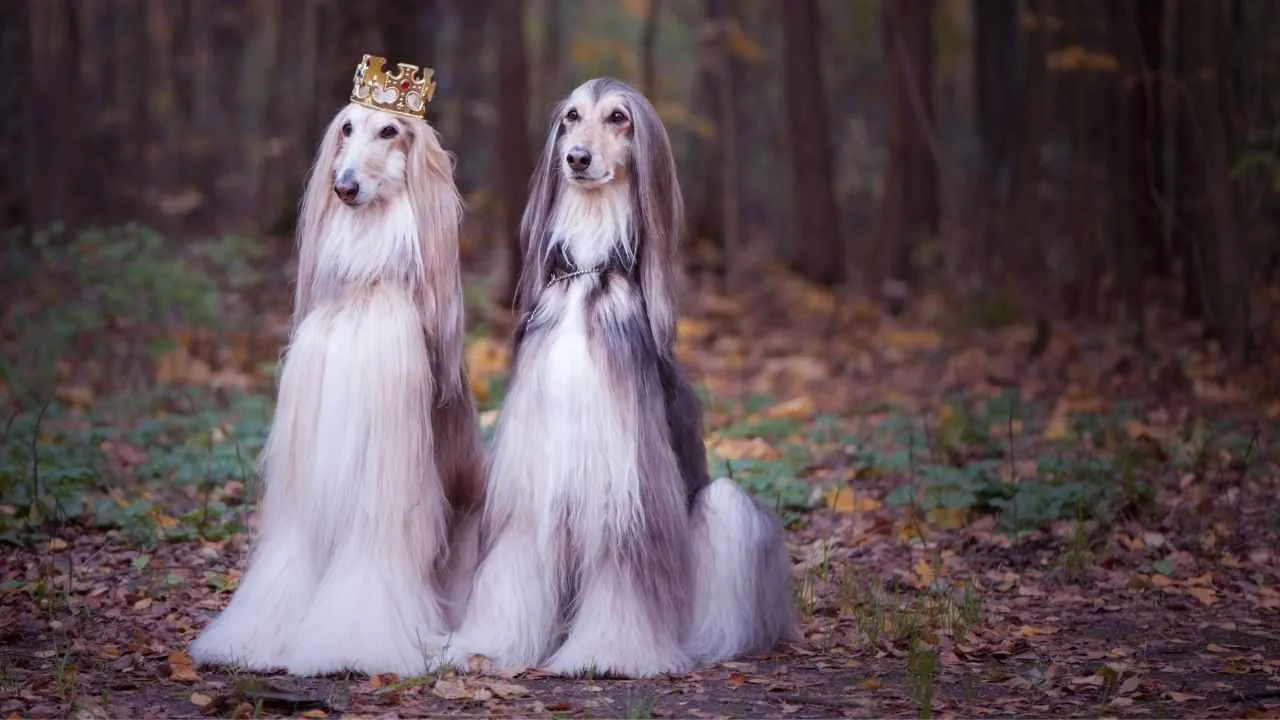
Vibe: The elegant loner with a flair for drama
According to the American Kennel Club (AKC), the Afghan Hound is the embodiment of aristocratic independence. With their flowing coat and dignified air, these dogs carry themselves like they’re walking the red carpet—because, honestly, they probably are.
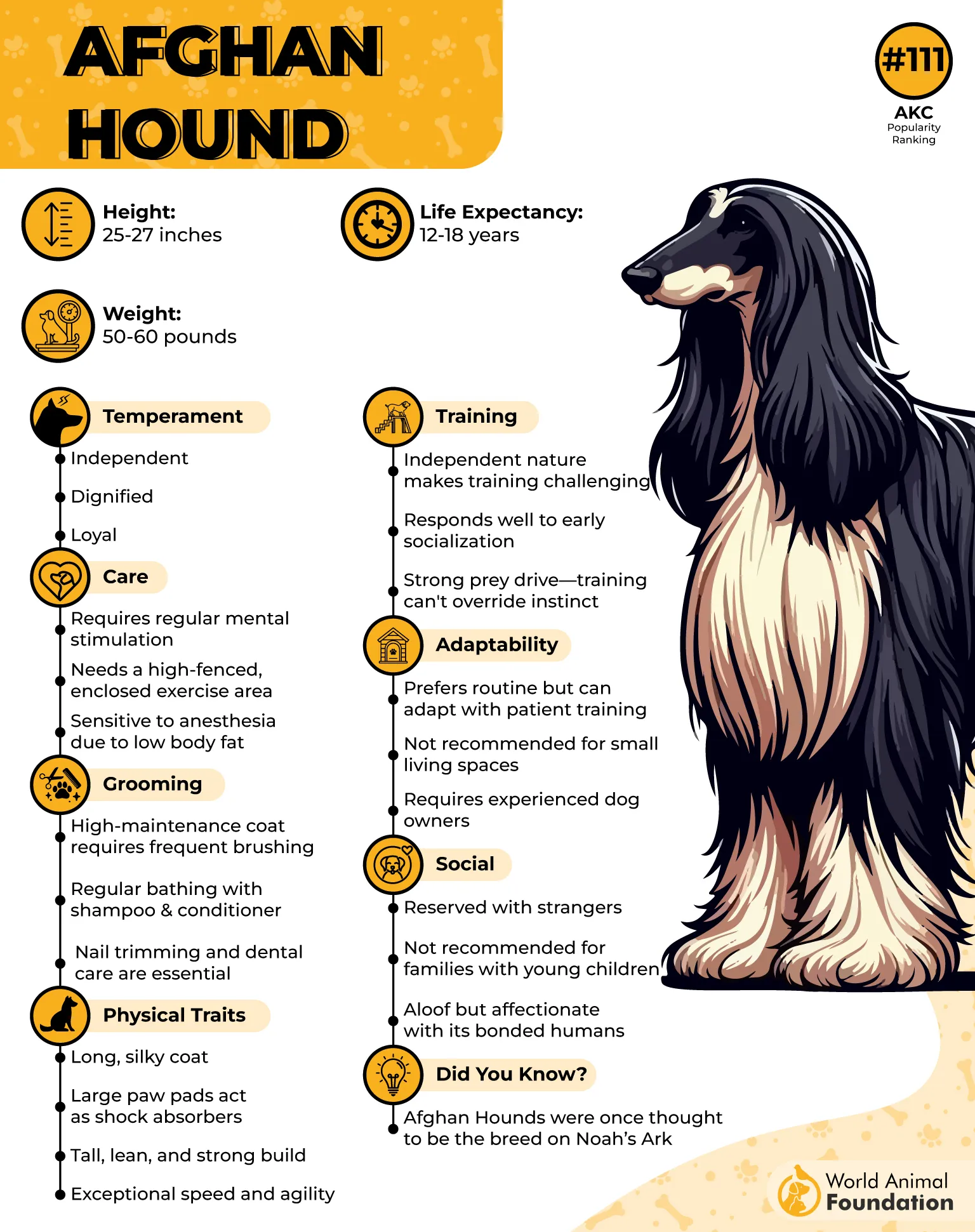
Weight: 50–60 pounds
Height: 25–27 inches at the shoulder
Afghan Hounds tend to march to the beat of their own drum, which means they can be a bit aloof or stubborn when it suits them. They love their humans but expect to be treated like royalty and don’t always take kindly to being rushed or pushed around.
While Afghan Hounds may demand more maintenance than many common family breeds, their distinctive temperament, remarkable athleticism, and elegant appearance make them a rewarding choice for dedicated owners.
Afghan Independence Points:
✔️ Regal, reserved, and self-assured
✔️ Prefers to do things on their own terms
✔️ Elegant, athletic, and a little bit sassy
While they may not be your typical “follow every command” breed, they’re smart and capable hunters with an innate ability to think independently. Perfect for owners who appreciate a dog with a bit of mystery and a whole lot of style.
With their long legs and strong prey drive, they require consistent daily exercise, such as long walks or jogging sessions. Due to their exceptional jumping ability, they should never be allowed off-leash in an unfenced area. A tall, secure fence is recommended to ensure their safety.
They are independent and reserved dogs. This breed values its freedom and can be quite athletic and energetic when exercised properly.
4. Great Dane
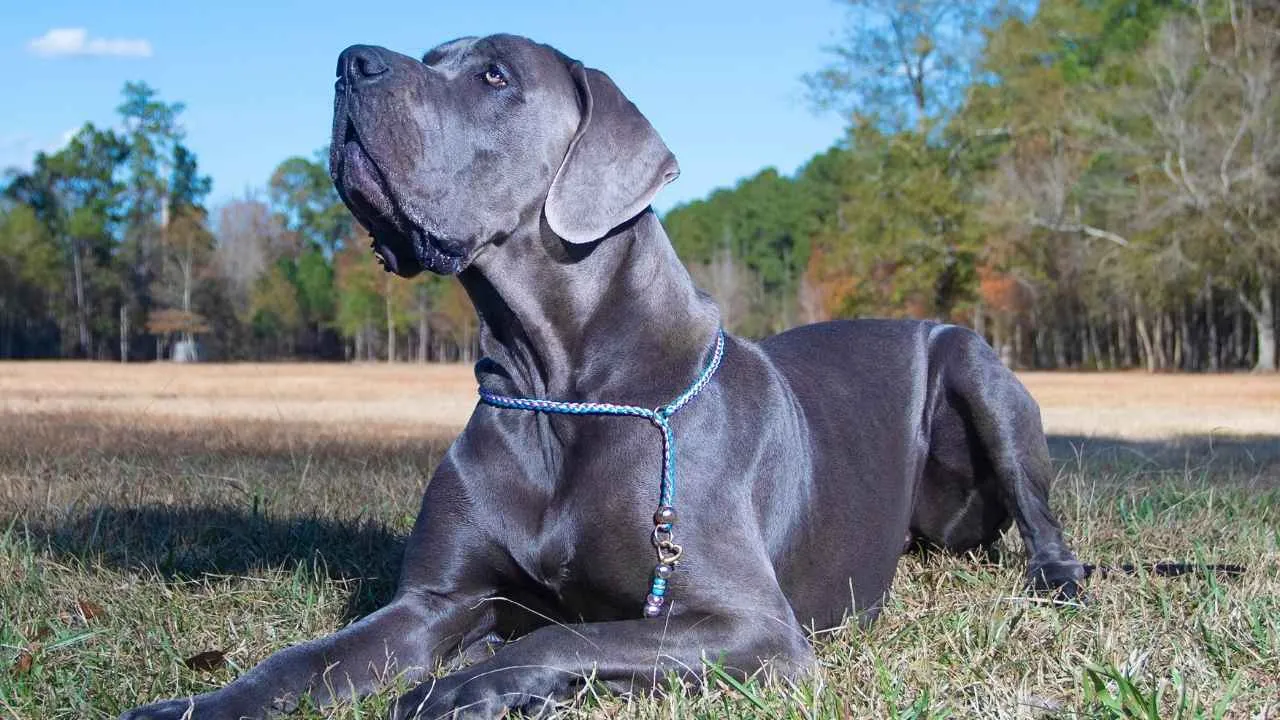
Vibe: The gentle giant with a calm temperament, confident streak
Bred originally to hunt large game and guard sprawling estates, the Great Dane is a dog who knows how to hold their own.
The Great Dane is a giant breed with a well-proportioned, muscular body and a short, smooth coat that comes in a variety of colors, including fawn, brindle, and blue. Their long legs and deep chest contribute to an elegant yet powerful appearance.
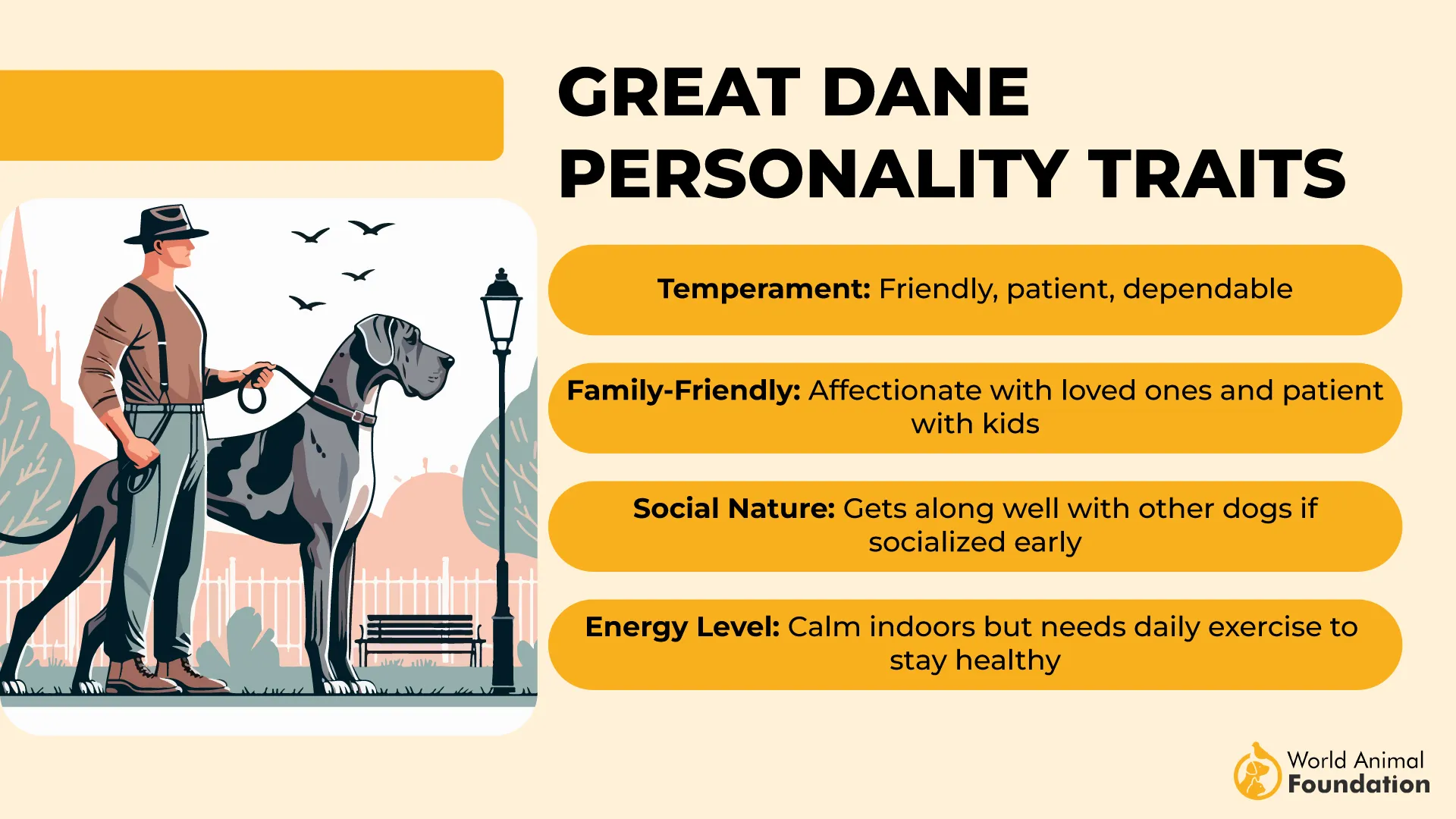
Weight: 110–175 pounds
Height: 28–34 inches at the shoulder
Generally, Great Danes are great family dogs and tend to do well with children when properly trained and socialized from an early age. However, due to their large size, all interactions between children and Great Danes should be carefully supervised to ensure safety for both.
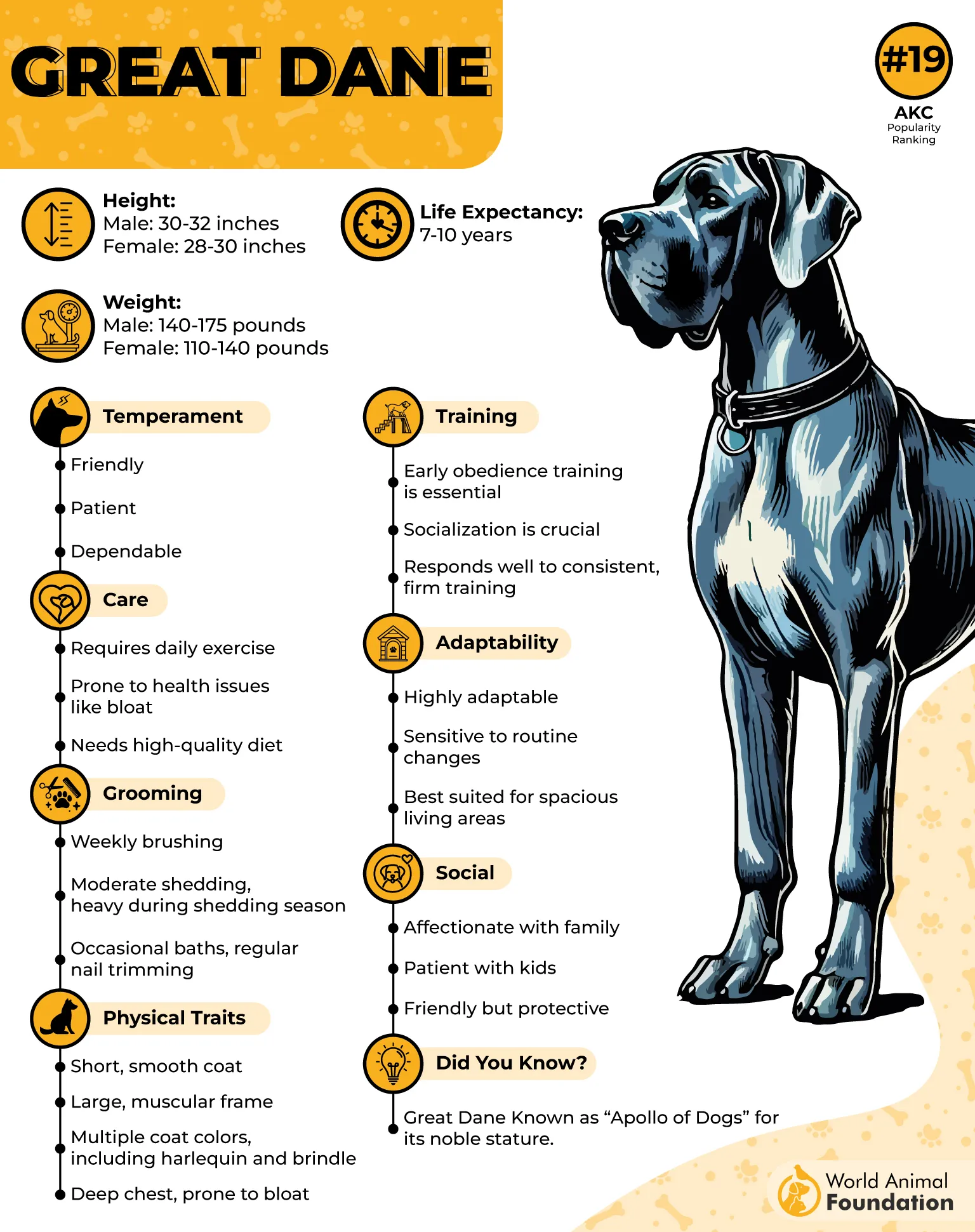
Despite their imposing size, they’re known as affectionate “lap dogs” who love their families deeply but aren’t needy. They’re just as happy lounging around the house as they are confidently standing guard outside.
Great Dane Independence Points:
✔️ Calm, confident, and dignified
✔️ Comfortable working or relaxing independently
✔️ Affectionate giants who prefer chill over chaos
These majestic giants exude quiet confidence and are perfectly comfortable working solo when needed. Great Danes have a calm, easygoing temperament, but like all independent breeds, they do best when socialized early to avoid timidity.
Great Danes are moderately playful and need ample space for exercise and activity. Regular long walks, ideally twice daily, are important to meet their physical needs.
5. Tibetan Mastiff
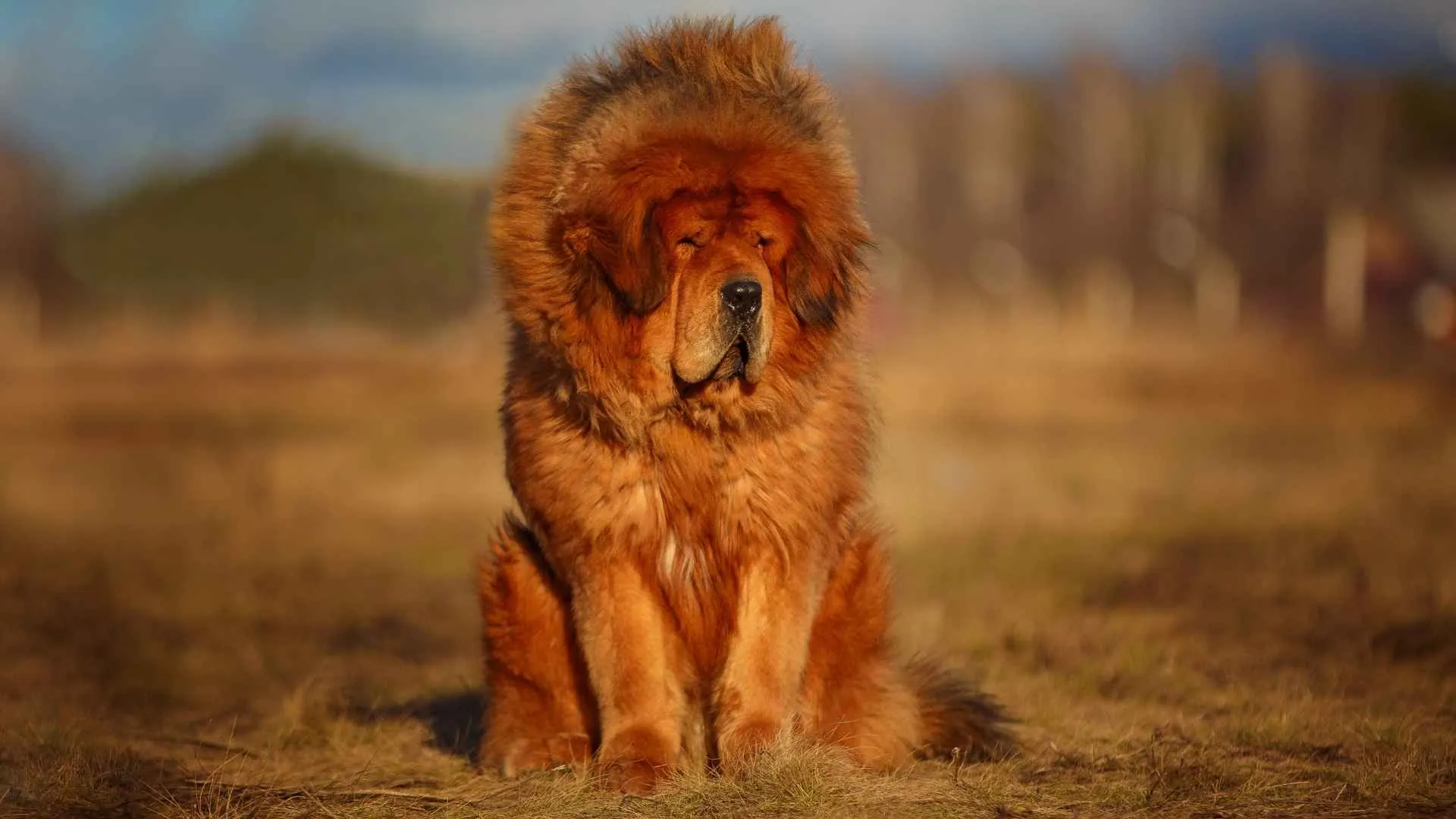
Vibe: The ancient guardian with a mind of its own
The Tibetan Mastiff is basically the royal guard of the dog world—born high in the Himalayas to protect livestock and property from wolves and other predators.
According to the AKC, describing this breed inevitably involves terms like “powerful,” “muscular,” “massive,” and “substantial.” The Tibetan Mastiff is robust and heavily built, with a dense double coat that forms a mane-like ruff around the neck.
Typically found in shades of black, brown, or gold, this breed’s large frame is complemented by thick fur adapted to harsh climates.
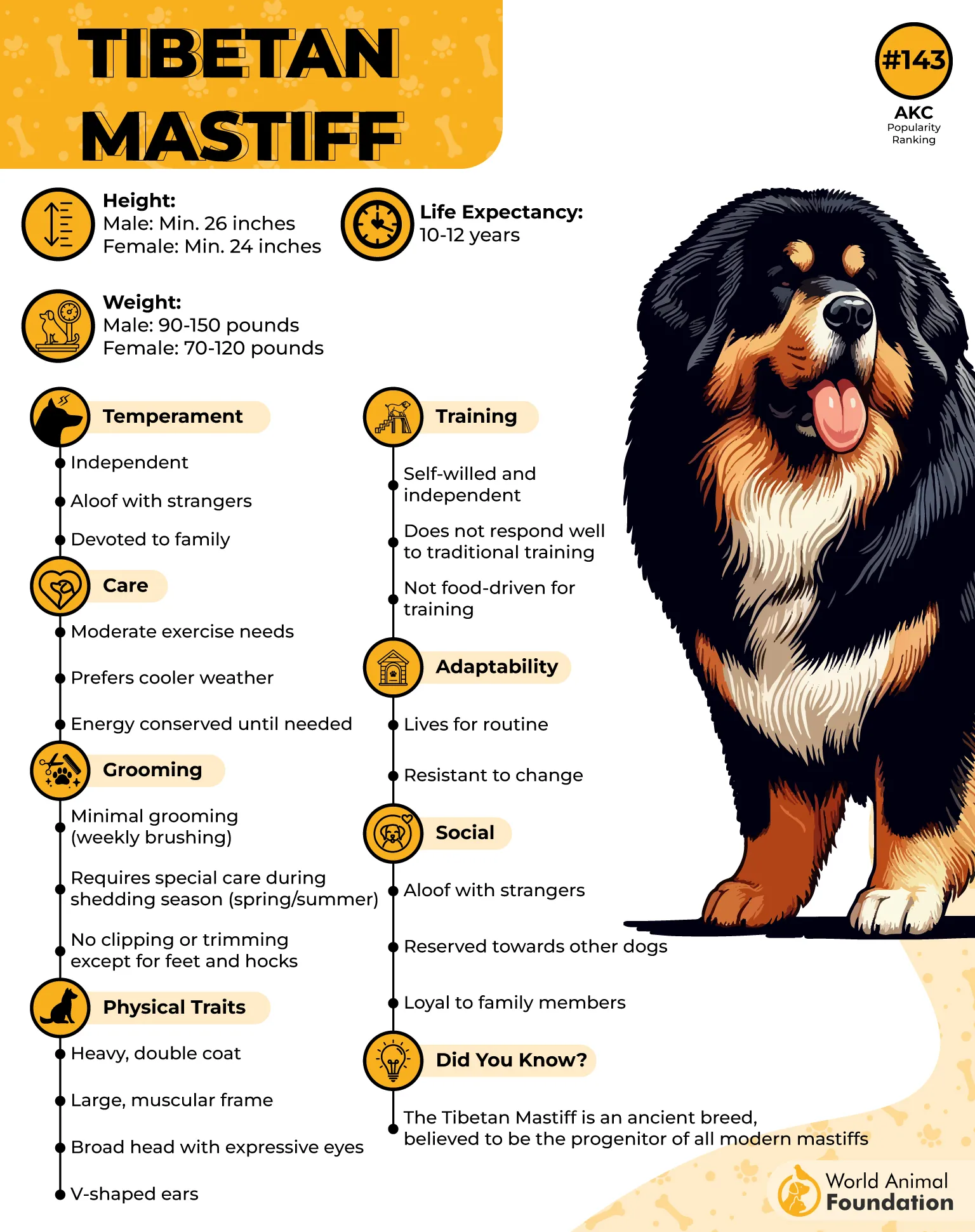
Weight: 70–150 pounds
Height: 24–30 inches at the shoulder
This independent dog is known for its aloof, watchful, and alert nature, making it a devoted family companion. Due to their strong loyalty, they tend to be reserved with strangers, so introductions should be handled with care.
Tibetan Mastiff Independence Points:
✔️ Fiercely protective with a strong sense of duty
✔️ Independent thinker who’s not a fan of bossiness
✔️ Calm and quiet, but always alert — the ultimate watchdog
These majestic fluff balls have a strong independent streak and a healthy dose of stubbornness. They’re not the type to blindly follow orders; instead, they think for themselves and decide when it’s time to listen.
Although they often appear laid-back and may sleep much of the day indoors, Tibetan Mastiffs are typically more active at night. They’re generally quiet but will bark to alert their family if they sense something unusual.
6. Alaskan Malamute
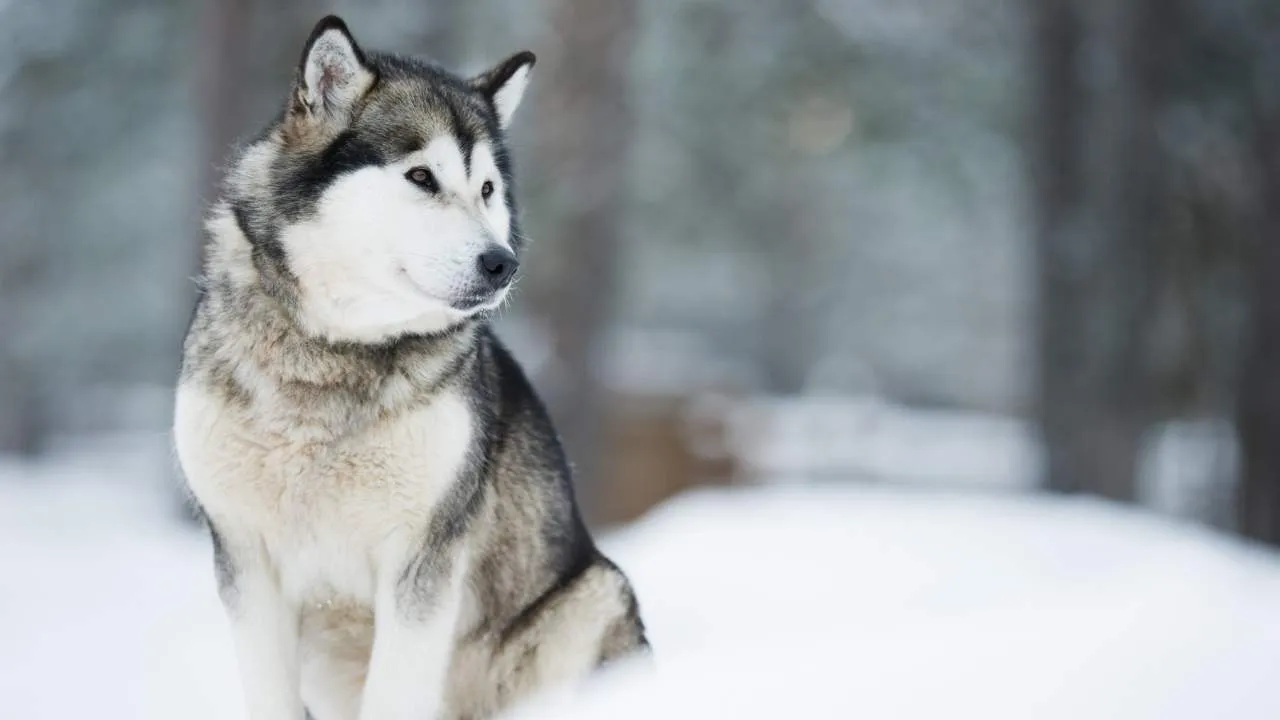
Vibe: The strong, hardworking adventurer who loves some “me time”
Alaskan Malamutes were bred for endurance, hauling heavy loads across frozen tundras, so they’re tough, strong-willed, and built to handle themselves. These large dogs have a confident, independent nature that sometimes comes with a bit of “I got this” attitude.
The Alaskan is a heavy-boned dog with a thick, double coat designed for cold weather. Their broad head, erect ears, and bushy tail that curls over the back give them a distinct, wolf-like appearance.
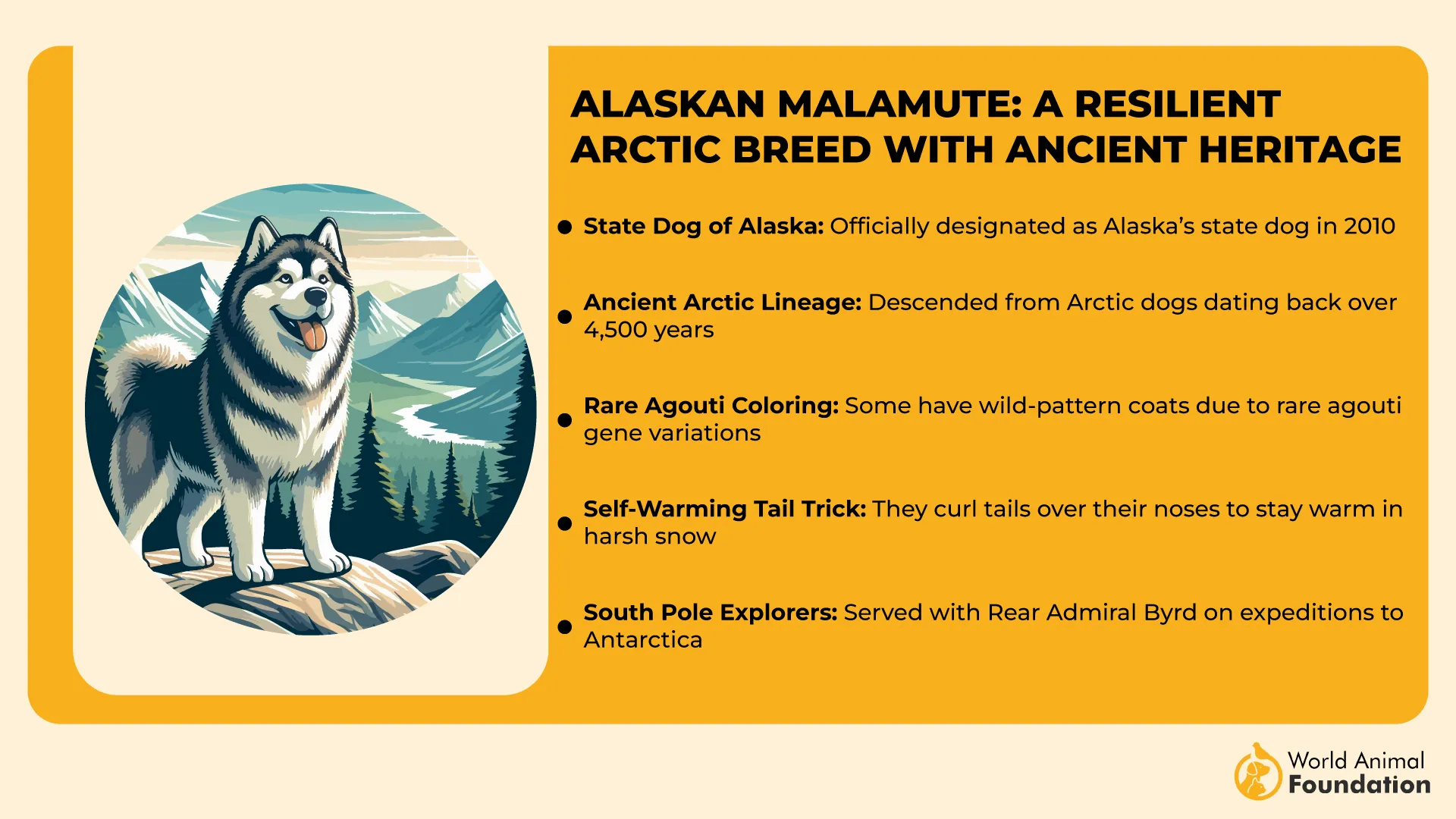
Weight: 75–100 pounds
Height: 23–25 inches at the shoulder
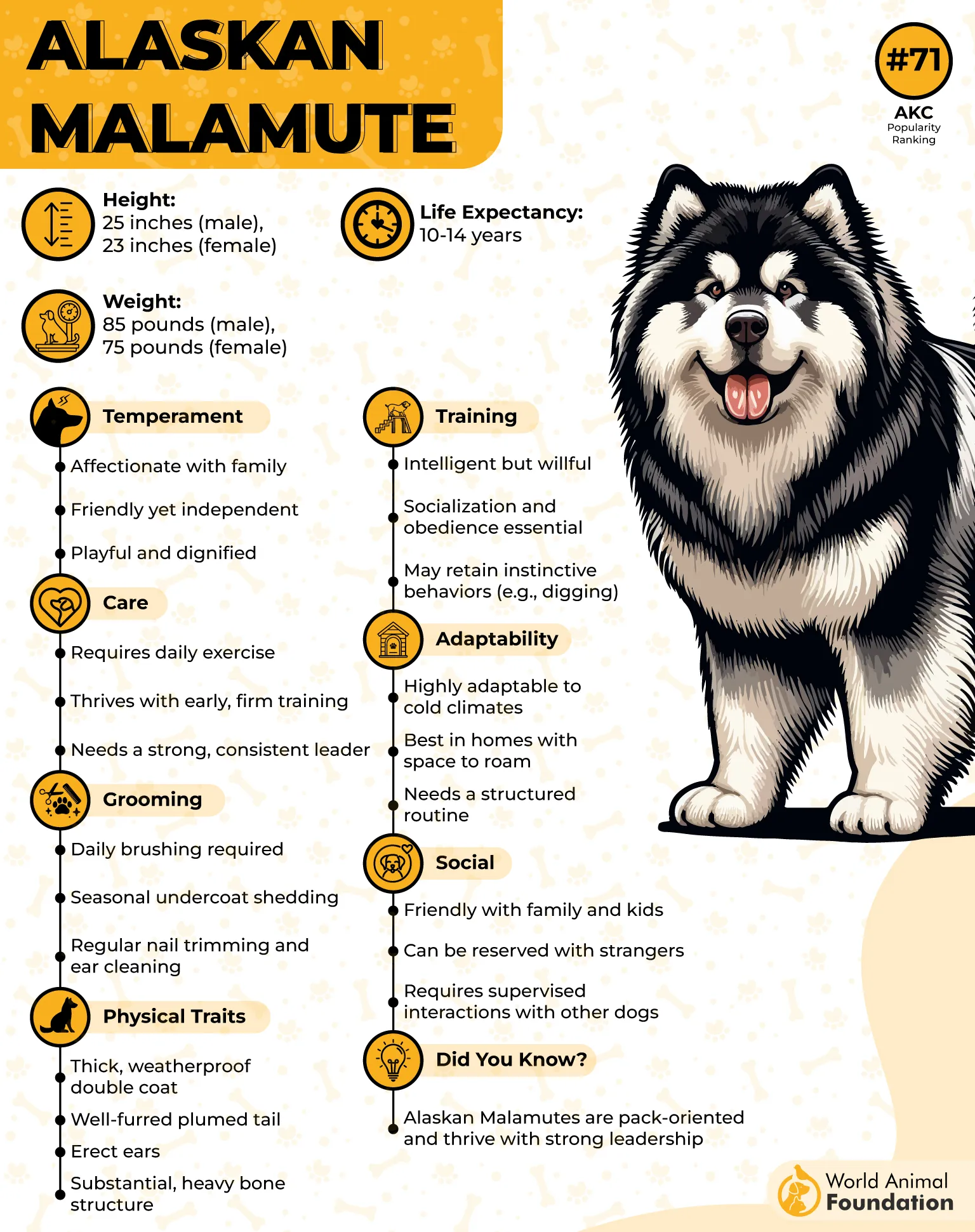
Known for endurance and strength, Malamutes are intelligent and independent dogs, but can be stubborn. They are friendly and affectionate with family, but require firm leadership and plenty of exercise.
Alaskan Malamute Independence Points:
✔️ Hardworking and confident with a free spirit
✔️ Loyal but likes to call some shots themselves
✔️ Requires lots of exercise to keep their independent mind happy
A Malamute needs a job or lots of activity to stay happy—lazy days are not their style. They may follow strangers, making them unreliable as guard dogs. However, they are playful and thrive on the attention and affection of their owners.
Malamutes aren’t known for excessive barking, but they are vocal and may howl occasionally. Bred to live and work in packs, they tend to thrive in a family environment and enjoy being around their loved ones.
7. Bernese Mountain Dog
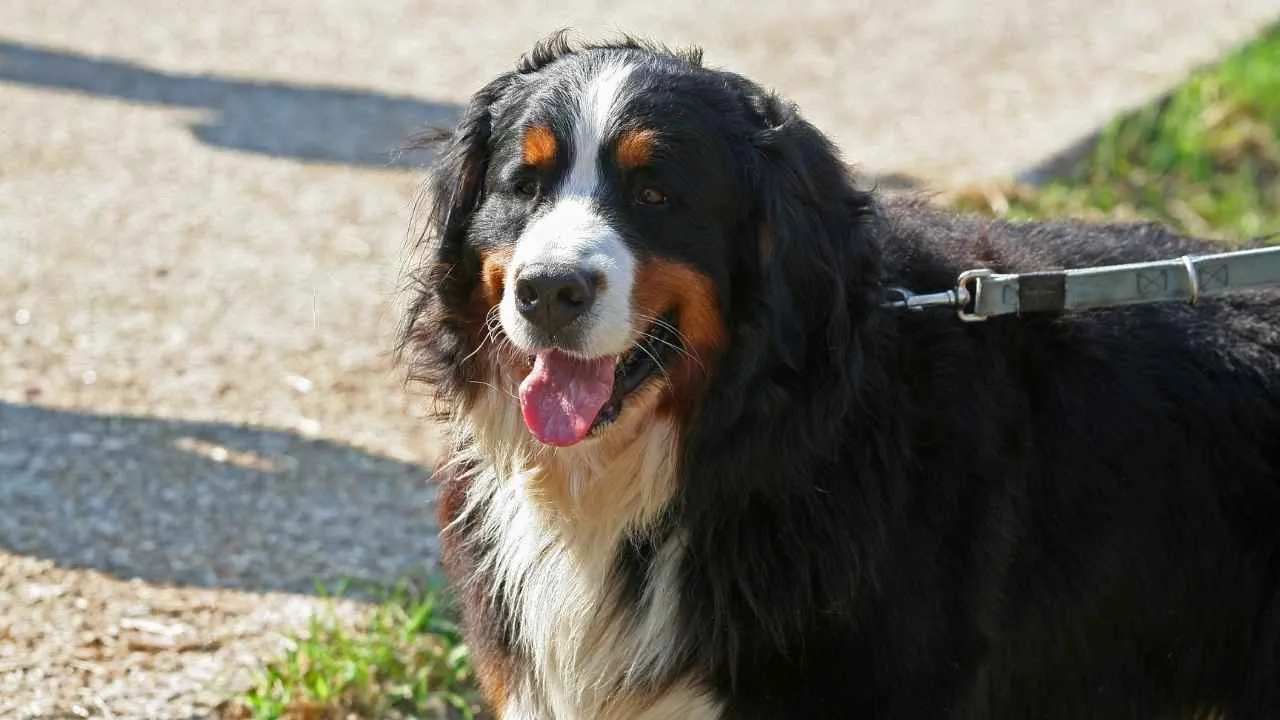
Vibe: The gentle giant with a chill, self-reliant side
Bernese Mountain Dogs might look like big, fluffy teddy bears, but they have an independent, calm nature beneath all that fur. Bred as farm dogs in the Swiss Alps, they’re used to working alongside people but can also handle quiet time on their own.
Bernese Mountain Dogs are sturdy dogs with a tri-colored thick, silky coat — black, white, and rust. They have a broad head, expressive dark eyes, and strong, muscular legs that reflect their working heritage.
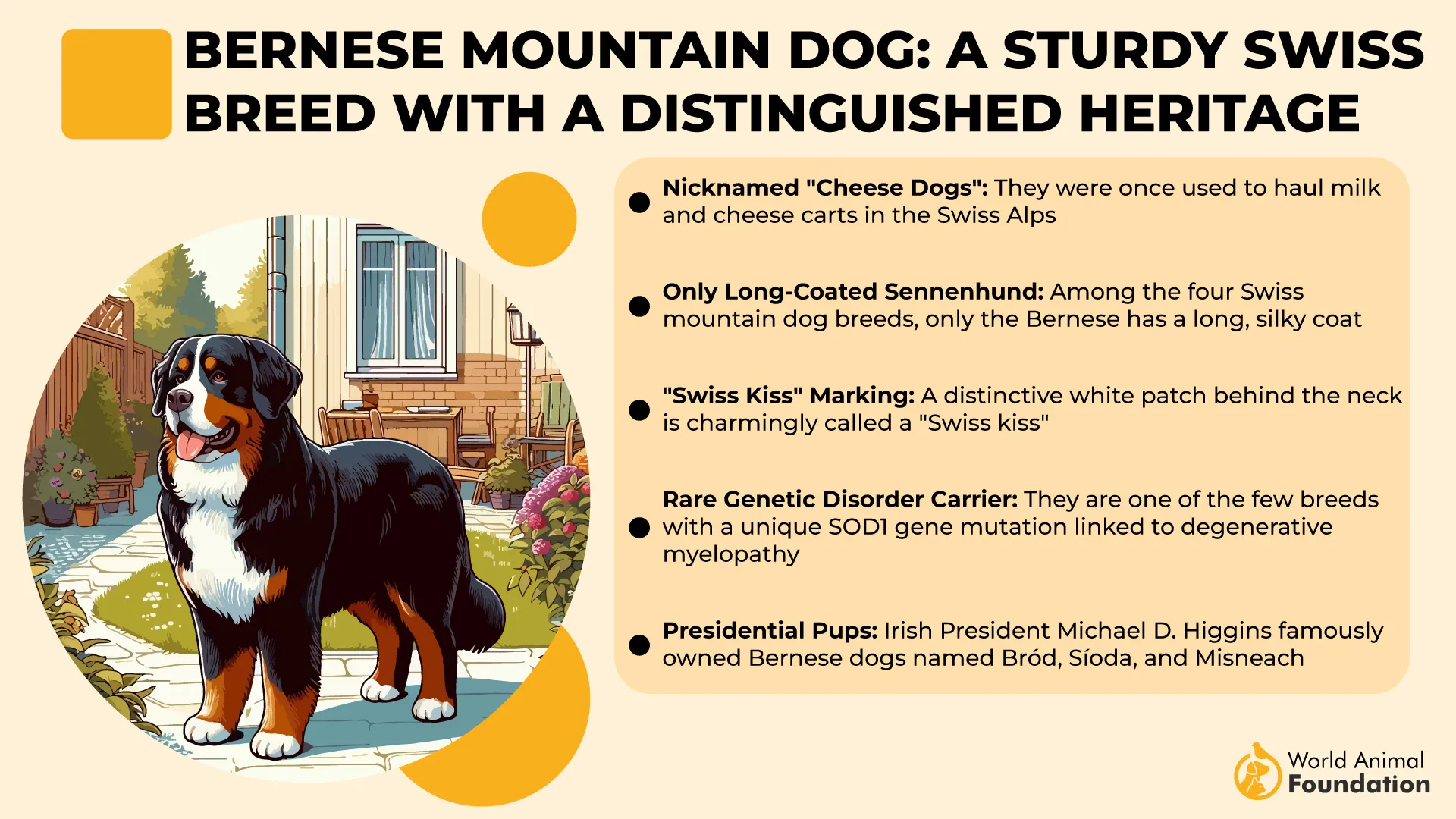
Weight: 70–115 pounds
Height: 23–27 inches at the shoulder
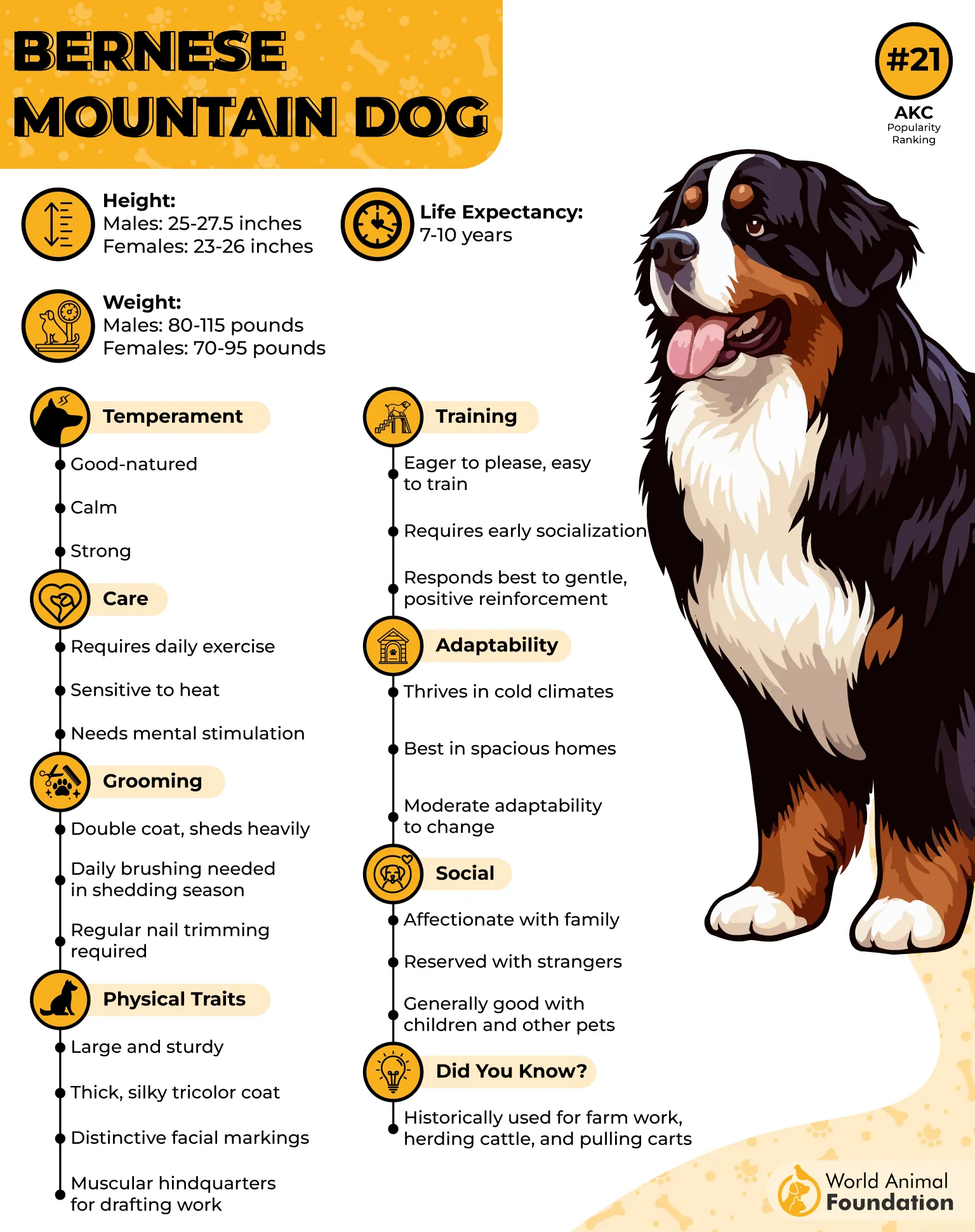
Berners are incredibly affectionate and great with families, but they don’t demand constant attention—they enjoy some downtime just as much as playtime.
Bernese Independence Points:
✔️ Calm and composed, sweet, and quietly confident
✔️ Affectionate but can chill solo without fuss
✔️ Big, fluffy, and low-key about their independence
They are not well-suited for apartment living; it’s essential that these dogs have access to a securely fenced yard where they can roam and patrol safely without the risk of wandering off.
PetMD noted that Bernese Mountain Dog is generally adaptable to change and minor stress, though they can be shy in unfamiliar environments. Early socialization with people, dogs, and other animals helps them become more confident and less prone to anxiety later in life.
These affectionate dogs often dislike being left alone, and some may experience separation anxiety if left for extended periods.
Conclusion
Independent big dog breeds are well-known for their strong independent thinking and remarkable ability to spend long periods on their own devices, particularly when given ample open spaces to roam. These breeds were originally bred for specific working dog roles, such as guarding livestock or hunting, where autonomy and decision-making were essential, which contributes to their self-reliant nature today.
Breeds like the Irish Wolfhound, Great Pyrenees, Standard Poodle, and other somewhat smaller but equally independent breeds like the Shiba Inu, Cairn Terrier, and Chow Chows also share these traits, often demonstrating a stubborn streak that makes early training crucial.
Despite their independent streak, these dogs do form close bonds with their family members, showing loyalty and affection on their own terms. Given the right environment—plenty of mental and physical stimulation, proper socialization, and patient training—these dogs can thrive as loyal, self-reliant companions who offer a unique blend of independence and affection.


